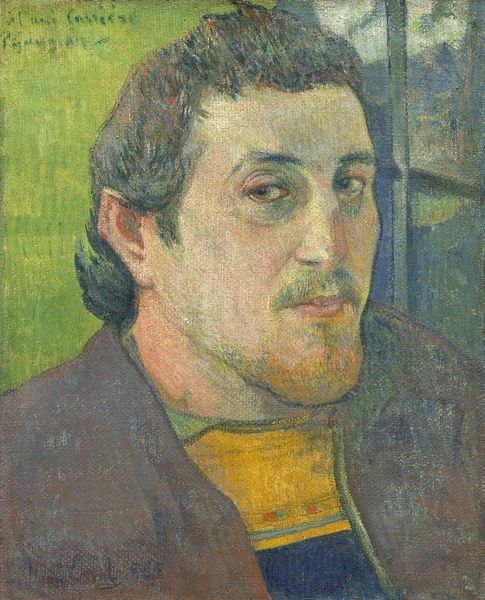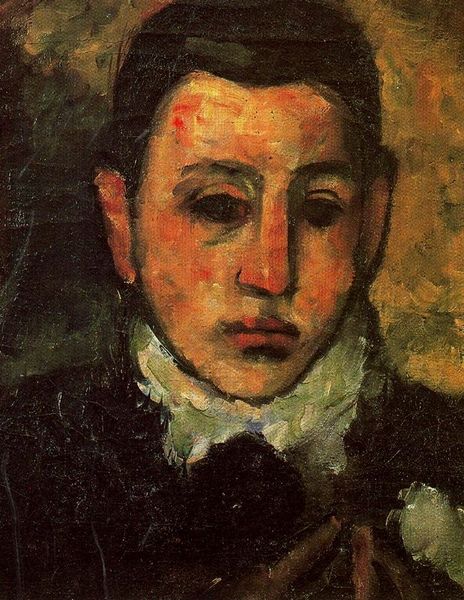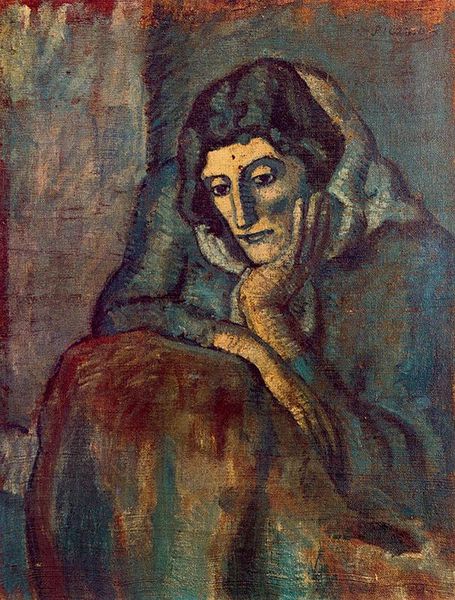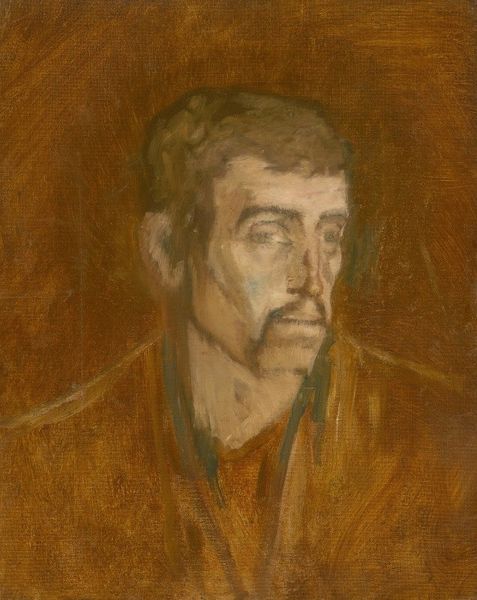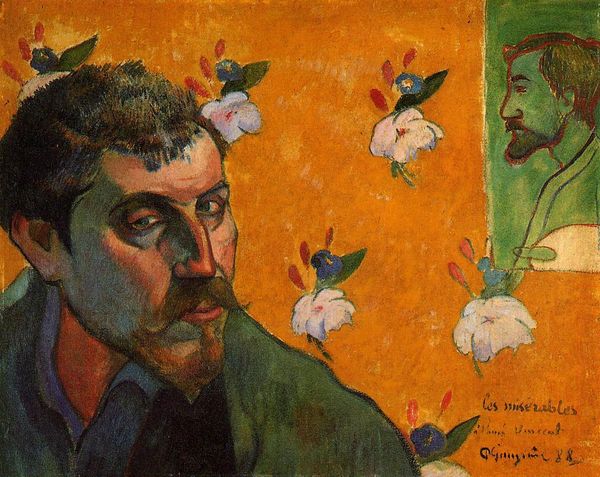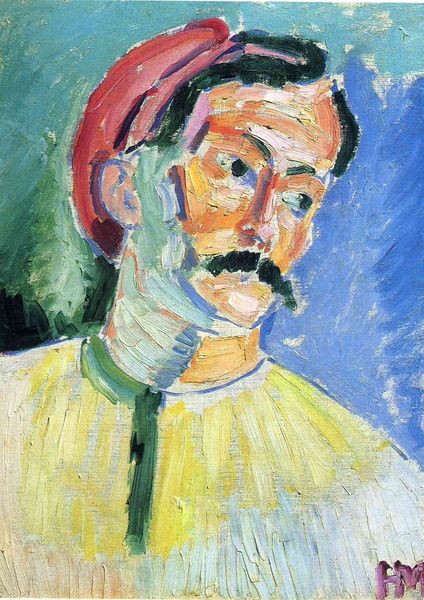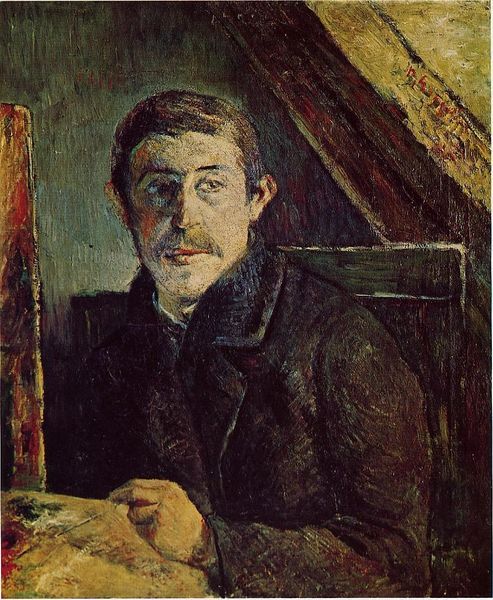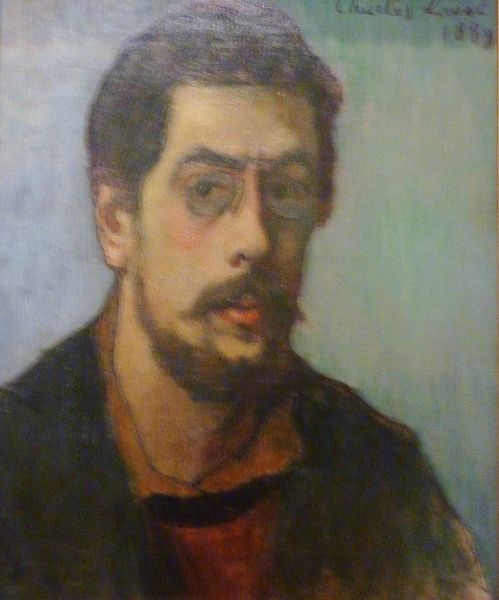
painting, oil-paint
#
portrait
#
self-portrait
#
narrative-art
#
painting
#
impressionism
#
oil-paint
#
oil painting
#
post-impressionism
#
academic-art
#
modernism
Dimensions: 46 x 38 cm
Copyright: Public domain
Editor: Here we have Paul Gauguin's "Self Portrait" from 1890, currently housed at the Pushkin Museum in Moscow. It's an oil painting, and I’m immediately struck by its subdued, almost brooding mood. The colors are very earthy. What do you make of it? Curator: Indeed, the somber palette is arresting. I see Gauguin engaging with a visual tradition of self-representation while simultaneously dismantling it. Notice the juxtaposition of the figure with the fragmented background. What figures hide behind the canvas on the left side? Editor: I see what might be an arm, perhaps a face in the background… is he deliberately obscuring or hinting at something? Curator: Precisely. Gauguin often used symbolism to explore his inner turmoil and artistic identity. In many cultures a 'good painter' could reproduce reality but did not question the structure of that same reality, however, the self-portraits reflect both a literal likeness, and a psychological landscape. Don’t you find the averted gaze particularly telling? It refuses direct engagement with the viewer. Editor: I do now that you mention it. It’s as if he’s confronting himself more than the audience. So the painting isn't just about physical appearance, but a deeper dive into the artist's psyche? Curator: Exactly! Consider how Gauguin later abandoned conventional Western art, searching for authenticity in "primitive" cultures. His artistic journey reflects a broader societal shift away from rigid academic norms towards exploring individual expression and the subconscious. What this work suggests, more broadly, is an individual breaking from all previous norms and traditions and setting forth an individual quest. Editor: This has given me a richer understanding of the symbolic language Gauguin was developing. It’s far more complex than a simple likeness. Curator: And through unpacking such symbols, we understand a bit more about the historical quest toward authentic experience.
Comments
No comments
Be the first to comment and join the conversation on the ultimate creative platform.

